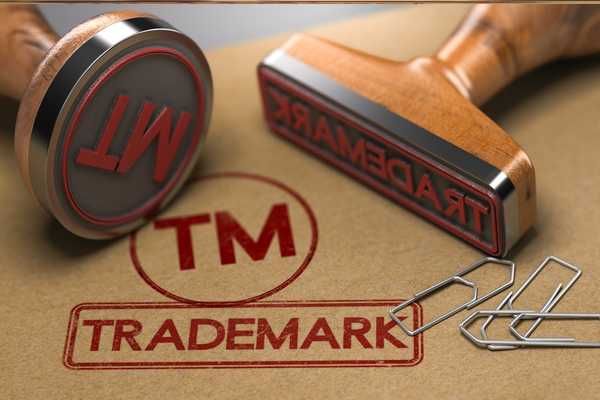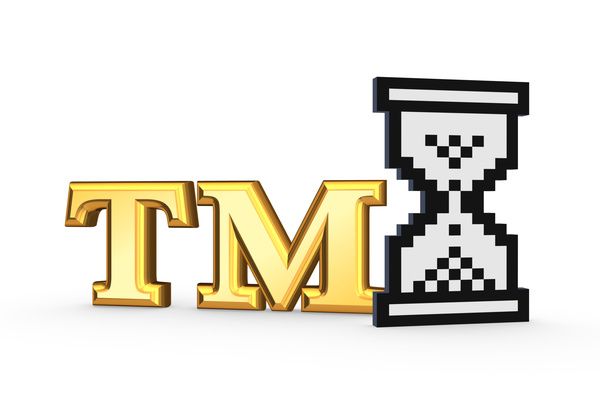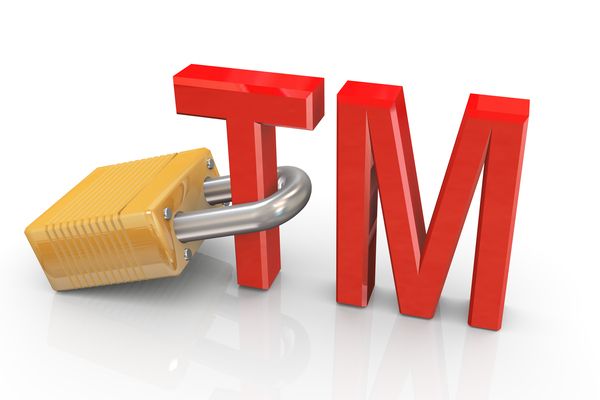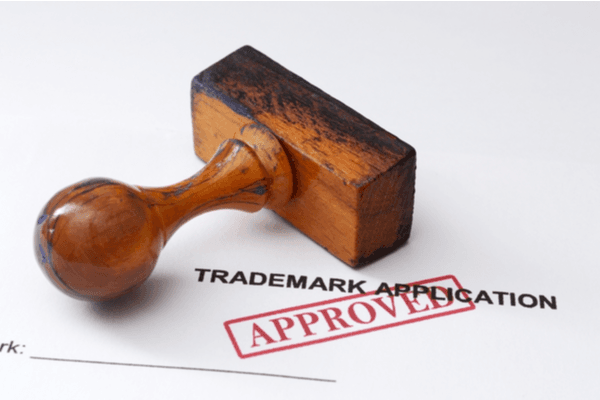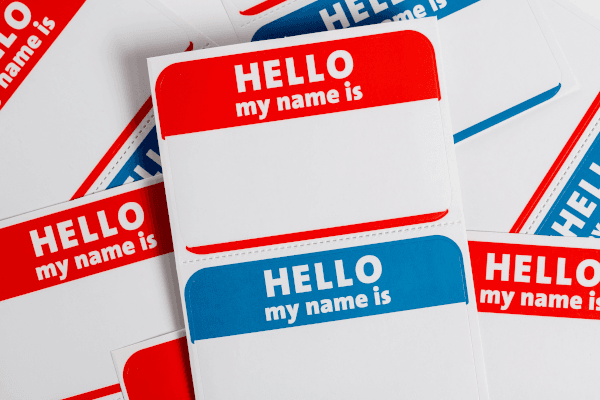Trademark Logo and Specimen Guidelines (and Why They're Different)
A logo is a graphic depiction of your trademark. A specimen is proof your trademark is being used in commerce. Learn all about logo and specimen guidelines here.


Congratulations on starting your trademark application! Once you’ve uploaded the proper documents, you’ll be on your way to registering your trademark and protecting your brand.
First, let’s talk about logos and specimens and the difference between the two. A logo is a graphic image of your trademark drawing. In contrast, a specimen is an image depicting your trademark name or logo in use and in conjunction with the goods or services you’re registering. In general, a logo is not a specimen, and vice versa. These are separate images fulfilling different purposes.
Logo Guidelines
In general, you can choose to register and trademark a name, logo, or slogan in your application. A logo trademark is a graphic image used to identify your brand as distinct from others. You must submit a digital depiction of the trademark name and any pictorial elements. Furthermore, you’ll need to declare any literal elements (the words or letters depicted in your logo) and a concise description detailing the visual aspects of your logo.
The USPTO outlines very clear guidelines for what is acceptable in a logo application. The image you submit should be a JPG file, under 5 MB, with as little white space around the logo as possible. Additionally, the USPTO requests that the logo be a minimum of 250 pixels by a maximum of 944 pixels.
If you’d like to protect your logo in all possible color variations, you must submit a black and white depiction of your logo mark. This demonstrates that the logo may be used in advertising or on products in any color without losing brand identity.
However, you may want to protect your logo only in specific colors, especially if your logo is only ever depicted on your product or in any marketing in those colors. For example, you might have a particular color or color group that is indicative of your brand’s identity. In that case, you must submit a color logo on a white background and declare the names of the colors depicted in plain wording (blue and red, for example, rather than #0000FF or #FF0000).
The logo you submit must be a digital image rather than a photo of a hand drawing. It must appear by itself on a blank background, without extraneous features or watermarks. Your logo should not have the ™ or ® symbol, as you can only use these once the trademark is registered. Additionally, the USPTO will not accept a photo of your logo on your products or packaging. This would be more appropriate as a specimen.
While you might use different versions of your logo, you may only submit one version per application. A file with multiple logo iterations in one image will not work for a single application. It’s best to submit the version of your logo used most frequently or file additional trademark applications for each iteration.
To recap, the logo specifications are as follows:
A digital image of the wording or pictorial elements of your logo on a blank background
JPG format
Under 5 MB
Between 250 pixels and 944 pixels
As little white space as possible
Black and white, if protected in all colors
In color,
only
if you are protecting specific colors.
asdf
The USPTO may reject your logo or send an office action letter (partial rejection) if:
It is not a digital depiction (such as a photo of a hand drawing)
It has watermarks
It includes the ™ or ® symbol anywhere on the mark
It’s a single file containing multiple versions or iterations of logos
It’s a photo of your logo on marketing or materials
asdf
Specimen Guidelines
If you’re currently using your trademark in commerce, you’ll need to upload a specimen. While a logo is a graphic, digital representation of your mark, a specimen is something else entirely. A simple logo file will not suffice for your specimen. Similarly, the USPTO will not accept a digital mock-up.
A specimen is proof that you’re using the trademark you’re registering to sell goods or services in the present rather than how you’ll use it in the future. Therefore, you must submit a photo or a screenshot of your trademark name, logo, or slogan in conjunction with the goods or services you’re selling.
The specimen file you upload should be in JPG or PDF format. If it’s a JPG, it should be under 5 MB, and if it’s a PDF, it should be under 25 MB. The specimen must be a clear, legible image displaying your trademark in its entirety. The trademark on your specimen should match exactly with the trademark name, logo, or slogan you’d like to protect, with no minor changes in the appearance or design. For example, suppose you want to register a trademark for “The Trademark Company” with a triangle over the text. In that case, your specimen shouldn’t display your trademark as “The Trademark Co” with a triangle to the left of the text.
Your specimen needs to depict your trademark’s use in the specific classification you’re registering on your application. For example, if you register under class 025 for clothing, your specimen shouldn’t show your trademark on stickers. Similarly, if you’re registering in a service class, the USPTO may reject your specimen if it only displays your trademark on your employee shirts.
If you file in multiple classifications, you’ll need to provide a specimen for each class.
Goods Versus Services
There are slightly different guidelines for an appropriate specimen for goods versus services.
The USPTO states that the following are good examples of a goods specimen:
A photo of your product with your trademark name printed on it
A photo of product packaging displaying your trademark
A photo of a product display featuring your trademark
A photo of your trademark on a label or tag affixed to your product
A screenshot of a website displaying your goods with an “add to cart” button featured
asdf
The USPTO states that the following are good examples of a services specimen:
An actual letterhead displaying your trademark
A business card featuring your trademark
A brochure or leaflet with your trademark
A physical or digital advertising for your trademark showing a clear connection to your services
An invoice for services rendered with your trademark
A business sign for your trademark
A photo of a live performance of a band with the trademark on display (for musician services)
A screenshot of your website offering services
asdf
A Note on Clothing Specimens
The USPTO states that it may reject your specimen for a clothing trademark if you submit a photo of a t-shirt with your trademark as the main graphic element. The presentation of the mark might appear to be decorative rather than an indication that you’re using your mark as a brand to sell your clothing goods.
A trademark placed on the breast pocket is more acceptable as it strongly indicates that the trademark is a brand rather than a decorative element. You could also print the trademark on the tag, label, or inside collar.
If you want to protect a front shirt design that might be considered decorative, you can add it to the supplemental register rather than the principal register. The supplemental register is for marks that don’t fulfill the requirements for the principal register. A mark on the supplemental register is protected from infringement but is not afforded the same legal advantages as the principal register.
Alternatively, a copyright registration might be a better option if you want to protect the creative aspect of the t-shirt design instead of its use as a brand to sell your products. In general, a trademark protects a brand, whereas a copyright protects the creative elements of a work of art.
Covering Our Bases
When uploading your logo or specimen file through Trademark Engine, you’ll need to check off a series of guidelines to ensure you understand the USPTO's requirements. However, if you check off all the guidelines but your logo or specimen doesn’t meet them, we cannot inform you that your file is inappropriate. To do so would constitute providing legal advice, and as we are not a legal firm, we have to accept anything you upload without any advice.
It’s vital to read and understand the guidelines for your logo or specimen. You want to avoid any rejections, and the best way to do so is to make sure your logo or specimen files fulfill the requirements before you upload.
To Recap
A logo is a graphic depiction of a brand that you want to protect for use in commerce. It’s a clear, digital drawing that visually identifies your brand as distinct from others.
A specimen is proof that you are using your brand in commerce. It’s a photo or screenshot of your exact trademark in use with the sale of the specific goods or services you’re protecting. A simple logo or digital mock-up doesn’t demonstrate that you are currently using the trademark in commerce.
The USPTO has specific guidelines on what makes a good logo or specimen, and you must make sure you fulfill these specifications. We cannot offer legal advice on if the USPTO will accept your logo or specimen. All we can do is make the guidelines as clear to you as possible.
Let’s Get Started!
If you’re ready to start your trademark application, head to the Trademark Engine home page and click “Get Started.” You should receive a link in your email where you can upload your logo or specimen.
Trademark Engine is not a law firm and none of the information on this website constitutes or is intended to convey legal advice. General information about the law is not the same as advice about the application of the law in a particular factual or legal situation. Individual facts and circumstances as well as legal principles including but not limited to the ones referenced on this website can affect the outcome of any given situation.
Trademark Engine cannot and does not guarantee that an application will be approved by the USPTO, that a mark will be protected from infringement under common US trademark law, or that any ensuing litigation or dispute will lead to a favorable outcome. If you want or have an interest in obtaining legal advice with respect to a specific situation or set of circumstances, you should consult with the lawyer of your choice.
Trademarket Blog
Everything you need to know about starting your business.
Each and every one of our customers is assigned a personal Business Specialist. You have their direct phone number and email. Have questions? Just call your personal Business Specialist. No need to wait in a pool of phone calls.















